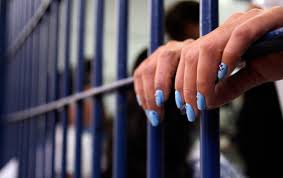Captive Genders
These are Sara’s posts, as she wasn’t able to upload individual posts of her own:
“Captive Genders,” Regulatory Sites: Management, Confinement and HIV/AIDS
This chapter opens by recounting the heartbreaking death of Victoria Arellano, an undocumented immigrant and transgender woman who died in ICE custody after being denied proper medical treatment despite her HIV positive status. She was 23 and died within 8 weeks of being taken to a processing center. Velasquez-Potts explains that Arellano’s death is illustrative “as a testament to the ways that transgendered immigrants have a particularly violent relationship with the prison industrial complex.” Both articles about her death and reports on HIV positive inmate treatment fail to account for the additional challenge transgender people face while incarcerated.
Velasquez-Potts then turns to the story of a man named Daniel Allen who was prosecuted for a felony after a physical altercation with a neighbor during which the neighbor alleged Allen bit him. Allen, who is black, gay and HIV positive, was charged under bioterrorism laws for biting the man with the intent to infect him. These laws construe Allen’s body as a weapon and perpetuate the way trans and queer bodies with HIV/AIDS are seen as threat to western society.
Can we relate this correlation of pathology and racism to anything in the sphere of current events? (We definitely can). Does Trump’s misnomer of the novel Coronavirus as “the Chinese virus” make a similar statement about race and disease as threats to western society? Why are we so apt to look for an “other” to blame for disease (whether it be gay people, people from China, etc) when European colonial settlers introduced dozens of fatal diseases to the lands which they imperalized?
Alabama and South Carolina prisons have segregated facilities for inmates who are HIV positive. The author argues that this policy serves to police, stigmatize and regulate gender and sexuality expression rather than prevent the spread of disease. HIV positive prisoners are forbidden from handling food at the facility because administration believe general prison population would not want “openly gay” inmates serving meals. This conflation of sexuality and disease of reminiscent of a time when the disease causing AIDS was referred to as GRID: gay-related immune deficiency.
Blood and the often racist narratives surrounding it have legitimized state violence from chattel slavery to solitary confinement. Confinement creates more violence and surveils bodies that don’t identify with the sexual and gender norms society has set forth for itself, forfeiting their personhood through contracting a disease that is supposedly the physical manifestation of an internal affliction. As of the article’s writing, more than 107 people have died in ICE custody since 2003. What do the ideas of territorial integrity, borders, and “illegal aliens” have to do with colonialism, white power structures and our larger conversations about incarceration (and who is most affected by it)?
“Captive Genders,” From a Native Trans Daughter
The chapter “from a Native Trans Daughter” artfully weaves together the author’s personal experiences with incarceration and scholarship on the prison industrial complex and settler colonialism. Young grew up in Hawaii as an indigenous, transgender woman from a working class family. Her relationship to the carceral system began at age 7 when her mother was arrested. As is so tragically often the story for low-income families of color, Young fell victim to the same carceral state her mother did when she was arrested in Washington for burglary following a dispute with her cousin. Her public defender was unhelpful and did not present the mitigating circumstances that surrounded the event, as a result Young was convicted of a felony.
After recounting this narrative, she turns to Angela Davis’ scholarship to understand her own conviction. Davis links the disproportionate incarceration of POC and working class people to increased prosecutorial power, diminished public defender functions and the imposition of mandatory minimums that reduce judicial discretion. Because the Prison Industrial Complex impacts marginalised communities disproportionately, the PIC invokes settler colonialism and gendered racial violence. Young was forced to trade sexual favors for physical safety and observed how incarceration affected not only the physical realities of the inmates but their minds as well, writing: “Taking on the failures of a system without critically examining the limits of personal choice often led a number of cellmates to conflate their sense of responsibility with issues beyond their control.”
How does this observation relate to Breaking Women and the ideas about self, blame and “renting out your head” that are introduced in the book?
Young then recounts how Hawaii and its native people have been affected by imperialist, white settler mentalities. Hawaiians have been surveilled, incarcerated and dispossessed of resources, power and land by white Americans since the 1840s. The author tells the story of Queen Liliuokalani, forcibly deposed by colonial settlers because her reign posed a threat to white supremacy and patriarchy. Young argues in this chapter that narratives about incarceration, race and gender must expand to include indigenous peoples and transgender or genderqueer individuals. This perspective highlights the importance of intersectionality to understanding the experience of these individuals within the PIC, which Young believes should be abolished.
